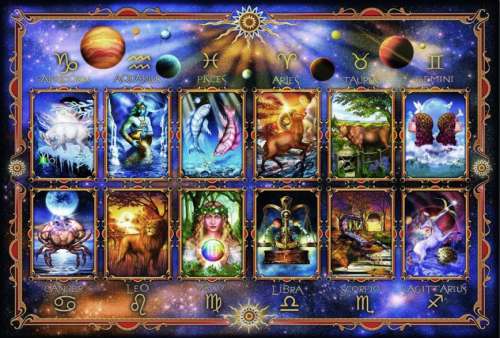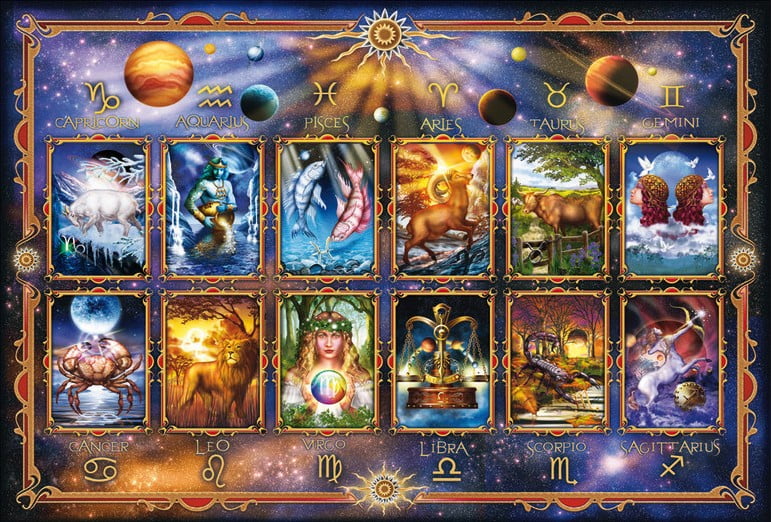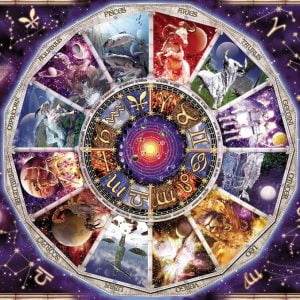Description
Zodiac Ciro Marchetti 4000 Piece Jigsaw Puzzle
With vibrant colours and vivid imagery, Marchetti depicts the symbols and character of the Zodiac against a celestial background in this wonderful Jigsaw Puzzle.
Stars are divided into many regions of different sizes each called a constellation. By connecting all bright stars in a constellation with lines, different images in the shape of animals and objects are formed. People named each constellation according to its shape. The International Astronomical Union divided the sky into 88 constellations with precise boundaries, making every star belonging to a particular constellation.
Seen from earth, the sun moves slowly in the celestial sphere and passes through constellations forming a large circle for a year. This circle is called ecliptic, The ecliptic is divided into twelve equal portions, each equivalent to 30 degrees. Each portion was named after the closest constellation. All these twelve portions were called ecliptic constellations, according to which western horoscopes theories developed.
The astrologists divide a year into 12 periods, during each period, the sun appears
in a constellation area. So everyone has a corresponding zodiacal sign according to the period his / hers birthday falls in. The twelve signs are Aries, Taurus, Gemini, Cancer, Leo, Virgo, Libra, Scorpio, Sagittarius, Capricorn, Aquarius and Pisces. People believe that different signs of the zodiac present different characteristics and Talents.
The term Zodiac derives from Latin zodiacus which in its turn comes from Greek Zodiakos meaning “circle of animals”. The name is motivated by the fact that half of the signs of the classical Greek Zodiac are represented as animals besides two mythological hybrids.
Although the zodiac remains the basis of the ecliptic coordinate system in use in astronomy besides the equatorial one, the term and the names of the twelve signs are today mostly associated with horoscopic astrology. The term “Zodiac” may also refer to the region of the celestial sphere encompassing the paths of the planets corresponding to the band of about eight arc degrees above and below the ecliptic.
In both astrology and historical astronomy, the Zodiac is a circle of twelve 30 degree divisions of celestial longitude that are centred upon the ecliptic, the apparent path of the sun across the celestial sphere over the course of the year. The paths of the moon and the visible planets also remain close to the ecliptic, within the belt of the Zodiac which extents 8 – 9 degrees north or south of the ecliptic as measured in celestial latitude. Because the divisions are regular, they do not correspond exactly to the twelve constellations after which they are named.
Historically, these twelve divisions are called signs. Essentially, the zodiac is a celestial coordinate system, or more specifically an ecliptic coordinate system, which takes the ecliptic as the origin of latitude and the position of the sun at vernal equinox as the origin of longitude.




